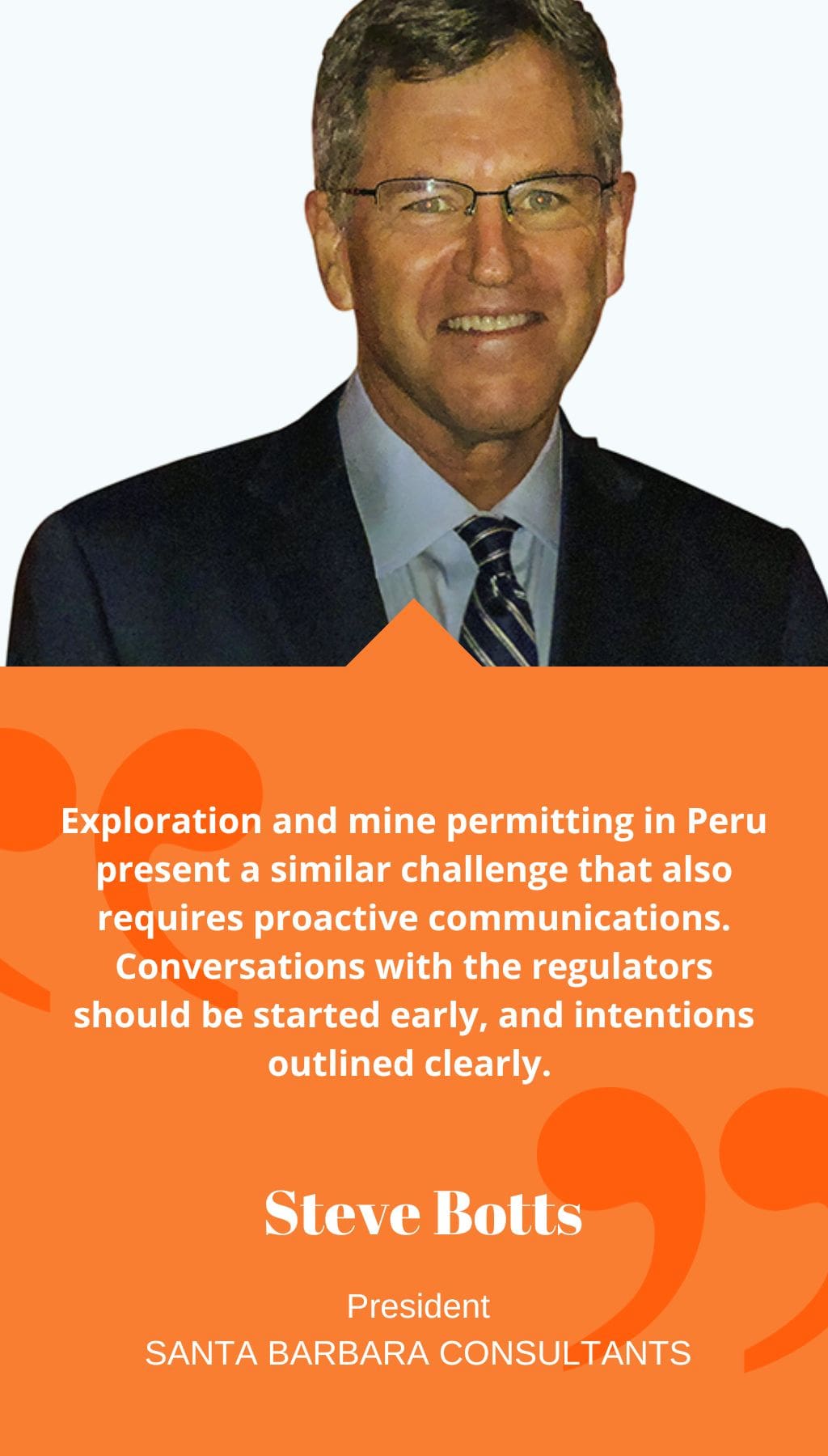
- Peru | 30 June 2021

Can you discuss how mining processes have been adapted to prioritize worker health and wellbeing instead of just injury prevention?
Most mining companies have done well in terms of managing occupational health, but the pandemic was a wake-up call for the entire industry. We saw a much greater demand for our occupational health expertise and services. Before the pandemic, it was relatively easy to schedule workers on different shifts, but the pandemic brought about a sharper focus on all aspects related to the movement of employees, not just at mine sites but also while workers were at home with their families. Remote work also advanced, such as mine dispatch centers from home offices. I believe this trend will continue even when the virus is under control.
What advice would you give to mining companies in Peru regarding social bottlenecks and permitting?
Effective communication with stakeholders is the number one priority in managing the social aspects of mining. Mining companies should engage with local communities as early as possible and promote dialogue about the community’s long-term vision and how a mining project could support it. In other words, involve the stakeholders in project planning instead of trying to impose the project. At the end of the day, the communities and governments have the final say, and without their approval, you will not be able to start operations, as we have seen in the cases of Minas Conga, Tambo Grande, and most recently, Tía María. A sense of buy-in and support from local stakeholders will come if they can see the economic benefits of the project and if it is clear that the project will not negatively impact the environment.
Exploration and mine permitting in Peru present a similar challenge that also requires proactive communications. Conversations with the regulators should be started early, and intentions outlined clearly. Permit applications should be prepared professionally, and the project proponents should be willing to meet with the regulatory authorities and communities so they fully understand the project. It is important to have realistic expectations regarding the permitting timeline, as the process can be bureaucratic, complicated, and highly unpredictable, and the pandemic has further complicated the process.
What sets Santa Barbara Consultants apart from larger mining consultancies?
Santa Barbara Consultants is a team of “miners helping miners.” Most of our team has worked for mining companies and has grown into the consulting space. This gives us practical expertise related to both mining operations and projects, in addition to hands-on technical experience in managing the challenges faced by mining companies in Latin America.
How do you plan on growing the company in the coming years, and which areas of the business do you see having good potential for growth?
Santa Barbara Consultants is always looking for new talent, especially professionals who have hands-on experience in mining projects and operations. We are very selective in the people we choose, not only from the point of view of qualifications and experience, but also in finding people who match our values and fit with our culture.
The management of environmental, health, safety, social, and technical aspects within the mining industry is growing beyond just compliance and economics. Issues such as carbon footprint reduction, climate change, and renewable energy sources must be evaluated and factored into the life of mine plans, integrating the mine with the needs of local communities. We believe that these areas offer tremendous opportunities for growth in the coming years, supported by the robust outlook for metals usage in the green economy.














